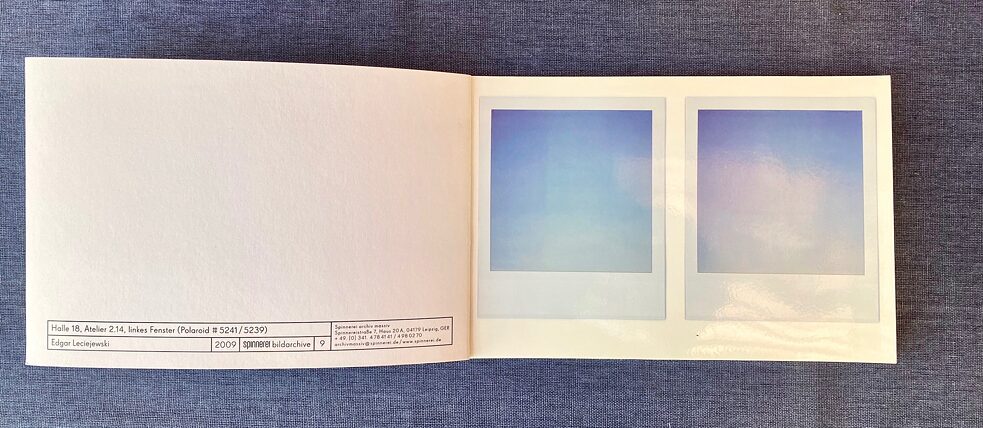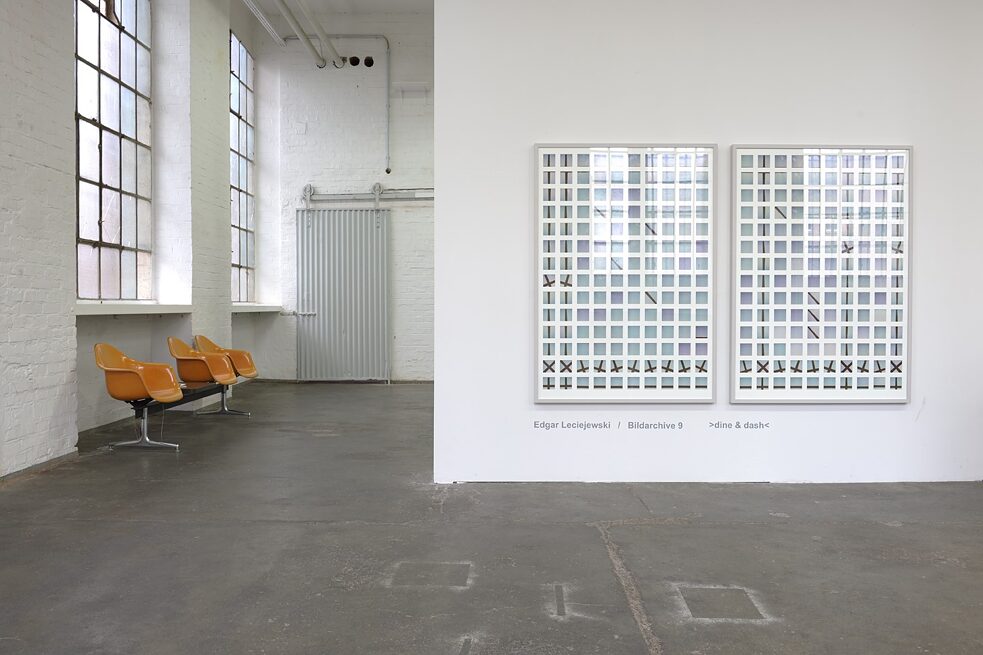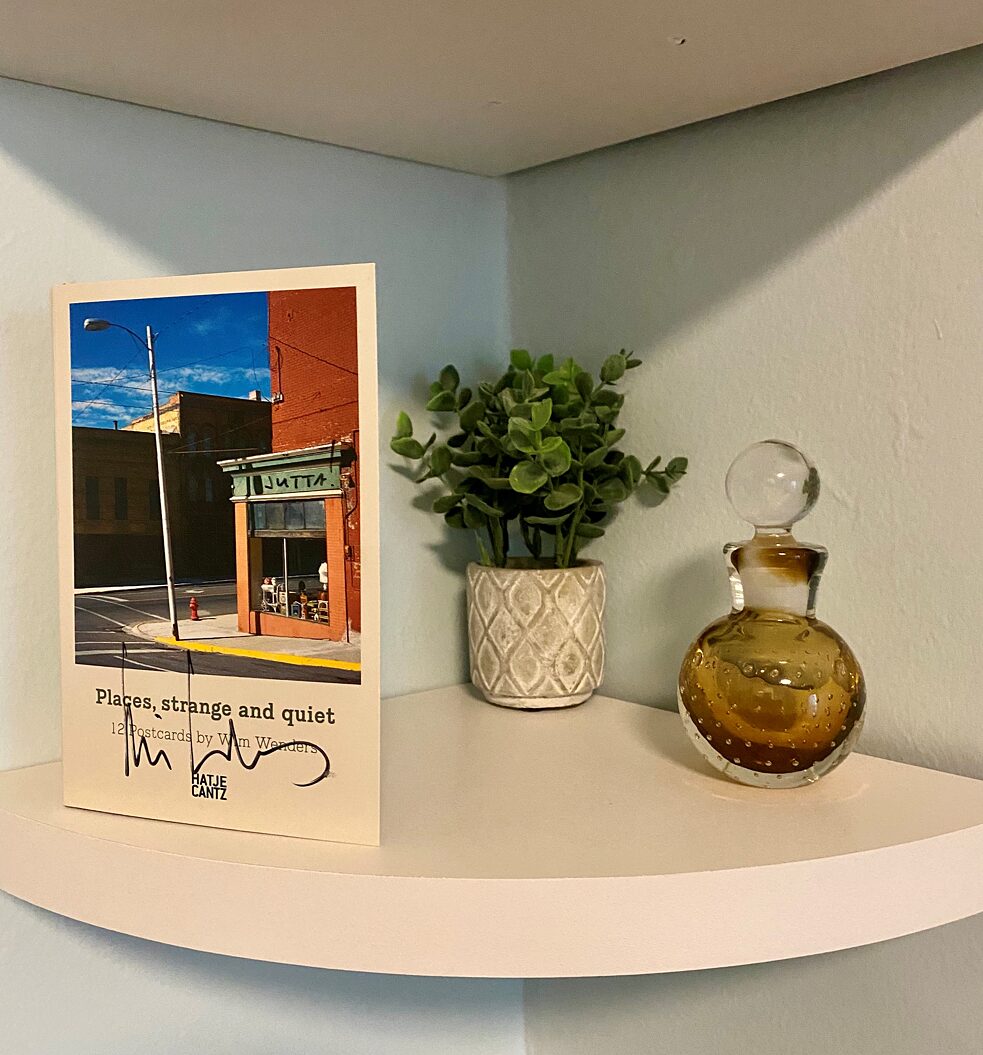Edgar Leciejewski’s bildarchive
The Photo as Postcard

In the introduction to this essay series, we started to unravel the layers of Leipzig photographer Edgar Leciejewski’s photo book “bildarchive”. Continuing our close reading, we delve into more forms and functions of art books and ask the artist about his concept and context.
By Jutta Brendemuhl
Twenty window photos are arranged in duets over ten pages in a little art book. It took me several sittings to realize that I was also holding a collection of ten perforated, ready-to-be-torn postcards. There is a technical term for this format: RPPC (real photo postcard) as opposed to standard postcards we buy at tourist stalls. Artists from avant-gardist Dieter Roth to Berlin painter Volker Hüller, from multimedia artist-activist Yoko Ono to enfant terrible performer Marina Abramović, have all created postcard art as formal experiments, political pamphlets, for charity, or as affordable special editions.
The back of each page in Leciejewski’s bildarchive is wide open—for a personal message, an address, a stamp. Small notes at the bottom give title and credit for the photo pairs, for example:
Hall 18, Atelier 2.14, left window (Polaroid #5241/5239)
Edgar Leciejewski, 2009, Spinnerei bildarchive, 9
Spinnerei archiv massiv
I asked Edgar to decode: “I’ve been at Spinnerei Leipzig, an old spinning mill turned arts district with studios and galleries, for a decade now. My live-work space is in hall 18, studio number 2.14. So the first line positions and records these two images—here I decided to juxtapose shots #5241 and #5239. I realized the entire series, which is actually called dine & dash, in 2009 as part of the exhibition bildarchive, which invited Spinnerei artists to create a meta-archive of their personal, site-specific images. My contribution happened to be the 9th in this multi-artist ‘massive archive’ that we exhibited together, so that became my archive title. The booklet you are looking at was produced as an accompanying mini-catalogue.”
The postcard format suggests a practical use, a potential for making the art ours, inviting the viewer in while reaching out of that window, opening up the possibility of connecting, communicating, and sharing with others. I haven’t dared to tear a page yet and let go of an image, (the same goes for my Wim Wenders postcard slipcase next to Leciejewski’s on my bookshelf), but I have started to imagine what I would write on the back and who I might send a blue-sky postcard to. “I have used them so often!” says Leciejewski, “sending little notes to friends and family. The postcard is the perfect medium to poetically say hello, and the front shows the sky I see every time I look out of my studio window and it connects me to the addressee.”
Through the window views, we find ourselves at the intersection of inside and outside, private and public, as so often in Leciejewski’s work. The artist explained that his whole Polaroid work is dual in nature, thus the two-fold series title dine & dash. In "dine" he portrayed the interior of his studio in multiples; with the "dashes" in this book he again and captured the outward view. “Dashes” has a myriad of implications, hinting at a work that happens fast, is finished off quickly, and tinged with subtle emotion—a sense amplified by the Polaroids’ dreamy blue-ish tint.
For his varied and vibrant oeuvre—C-prints, snapshots, posters, books, fabric assemblages, and postcards—Leciejewski has won awards from the Kodak Professional Emerging Artist Prize to the British Institution Award of the Royal Academy London.
More on the photographer, his wider practice, and how he creates and collaborates in our next installment.

